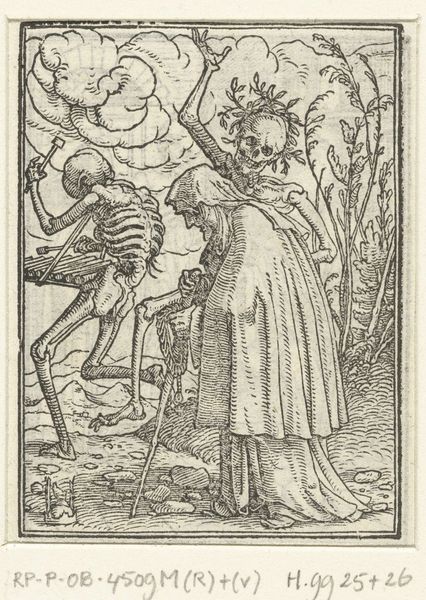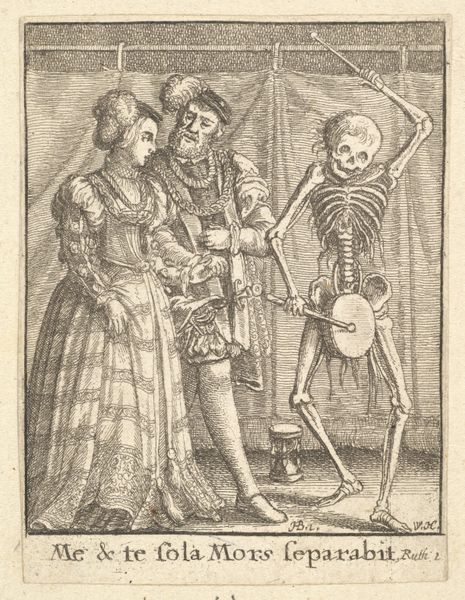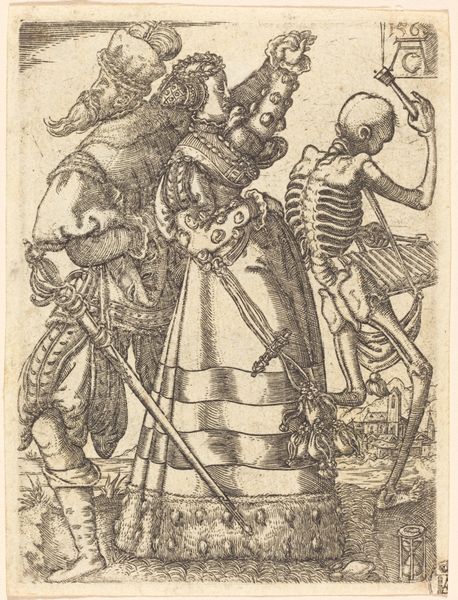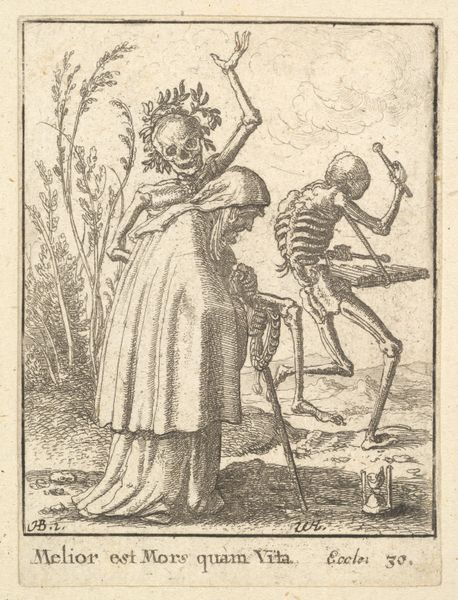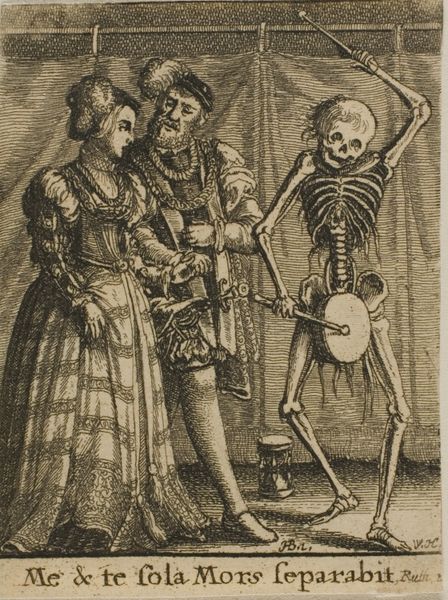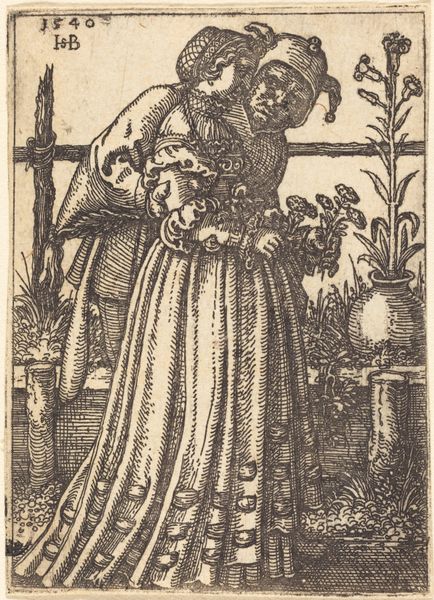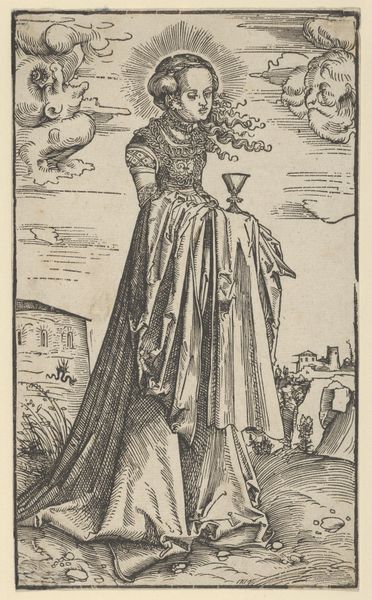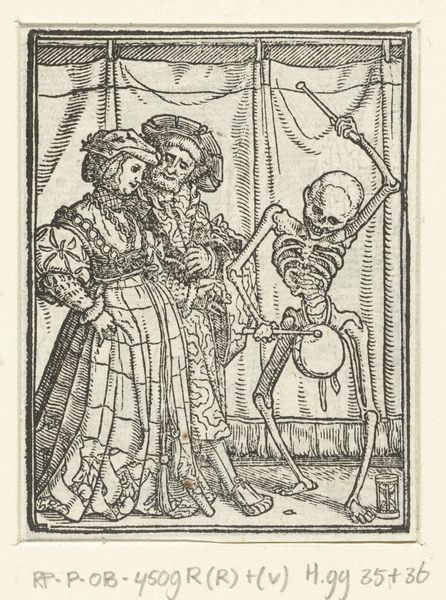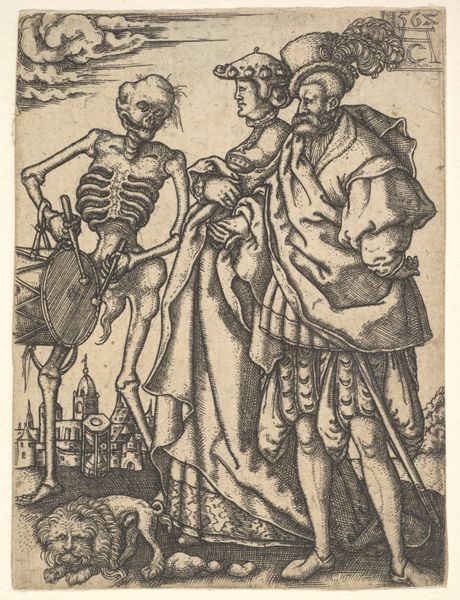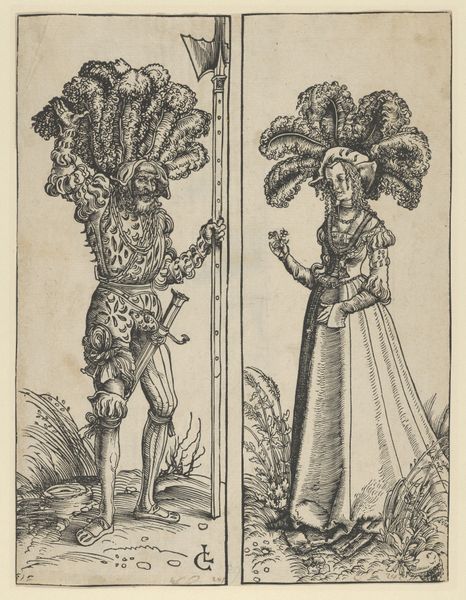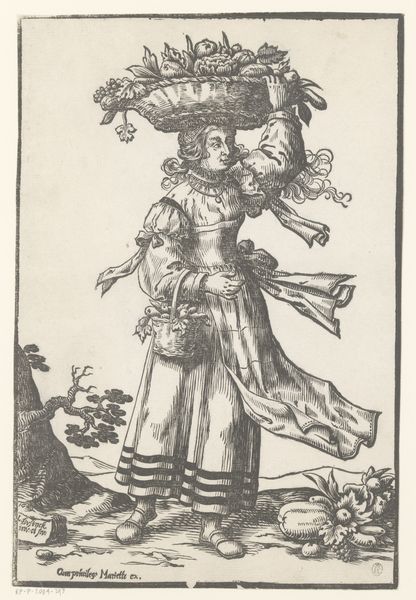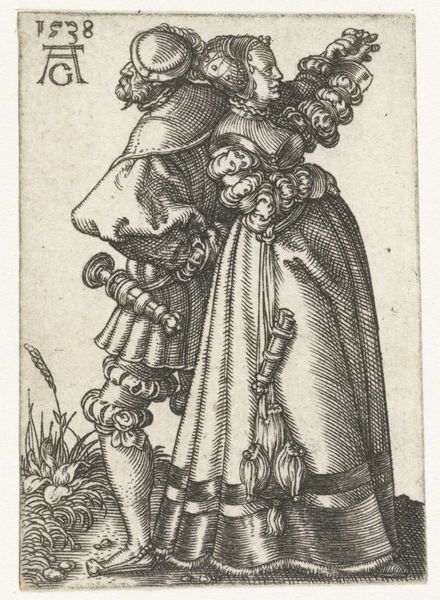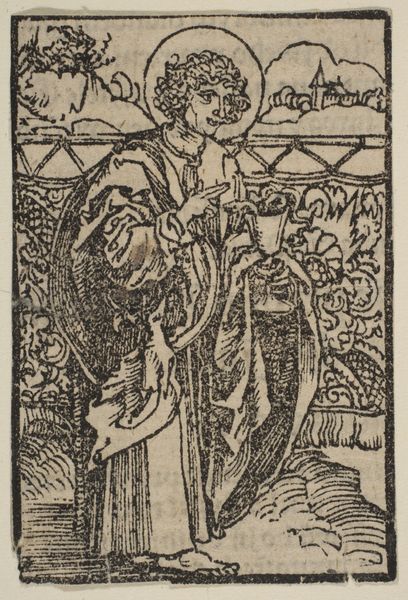
print, engraving
#
medieval
#
allegory
# print
#
figuration
#
momento-mori
#
engraving
Copyright: National Gallery of Art: CC0 1.0
Franz Brun created this engraving, "Woman and Death," around the late 16th century. At first glance, we see a woman holding roses and an hourglass, symbols of earthly love and fleeting time, while Death lurks behind her with a bone. The “dance of death” motif was popular then, echoing through time from the frescoes of the Middle Ages to the works of Holbein. Note how the hourglass in the woman's hand mirrors the symbolic use of the scythe in depictions of Chronos, the god of time in antiquity. The gesture speaks to our primal awareness of mortality. Consider, too, how the rose, a symbol of love and beauty, is juxtaposed with the stark reality of death. The contrast between the ephemeral beauty of the flower and the starkness of the skeleton elicits a deep-seated response. This piece connects us to generations past, reminding us that life's beauty and fragility are eternally intertwined.
Comments
No comments
Be the first to comment and join the conversation on the ultimate creative platform.
